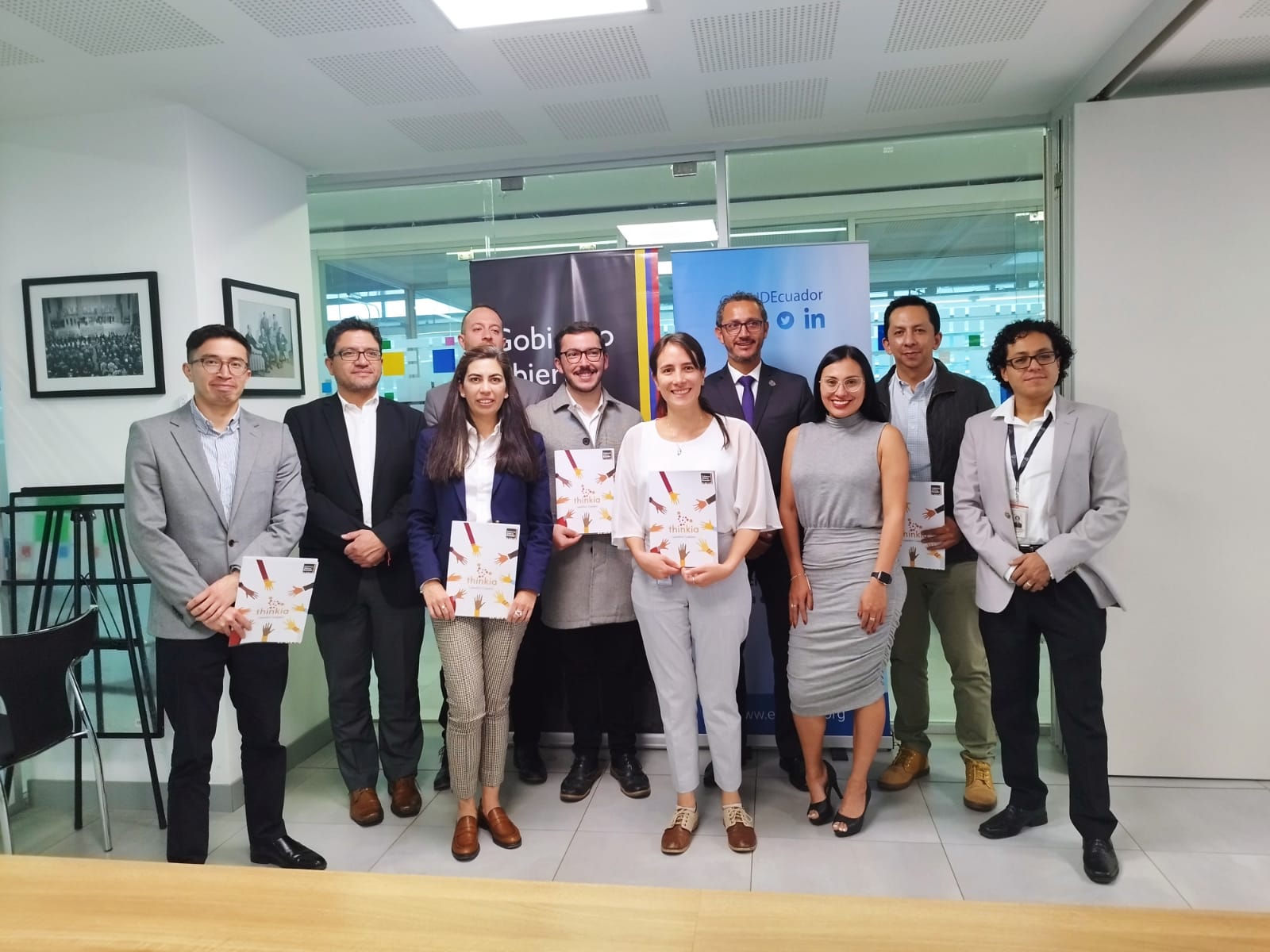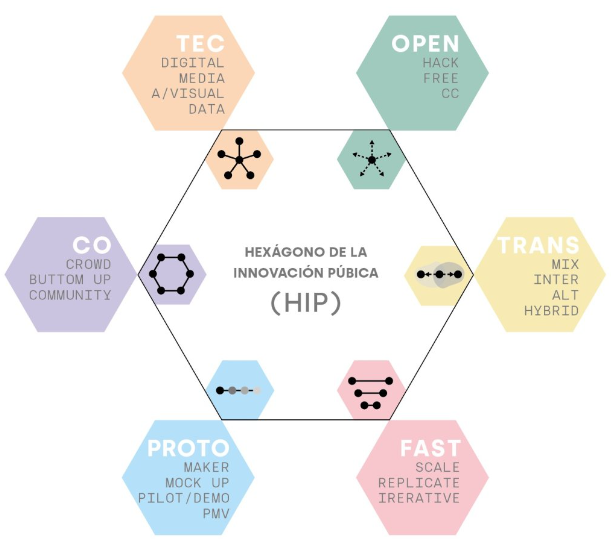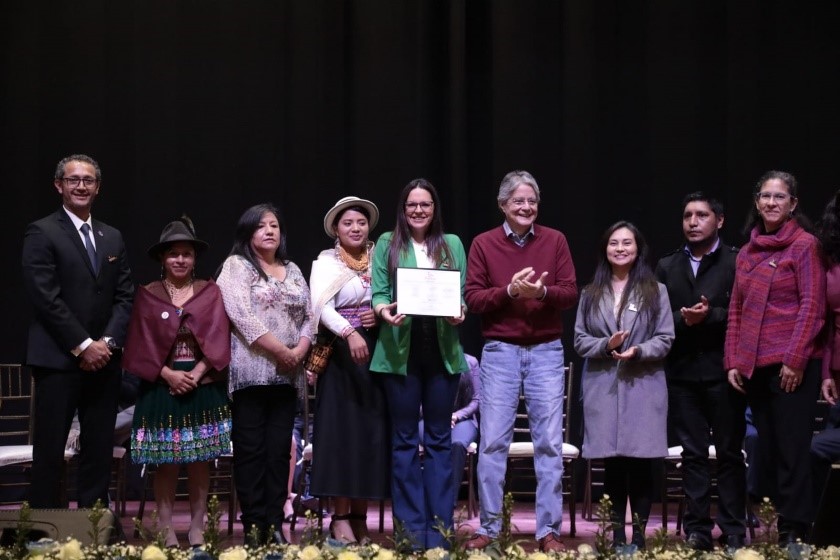Moving at the speed of trust: the juicy fruits of collaboration and persistence
18 de Septiembre de 2022

It is well known that together we go further, but the truth is that generating a coalition of allies is not an easy task, especially if it is meant to last over time.
Working as a network
Three years ago, we started to map the innovation ecosystem in Ecuador to identify what other actors were working on, and how they were doing it. Nevertheless, we did not only want to generate a map of actors, but rather build a set of tools that will allow the so-called “innovation ecosystem” to act, move and behave like one. The perfect image is to think of a cloud of points becoming an organized “being” where actors are communicated and related to each other.

So, we started having discussions with other actors from the innovation ecosystem to understand how this set of tools should look like. Once we collected their needs and co-disigned how the tools should function, we went even further. We decided to come up with a strategy to contribute to the articulation of the innovation ecosystem, since we doubt it that a set of tools will do the job of real human connections.
Thus, we did two things:
- On the one hand, we developed a platform called Thinkia – innovation lab where actors can map their innovative initiatives, learnt about funding opportunities, and have access to a long list of materials and resources to learn about innovation methods and techniques. Thinkia is a collaborative platform built by several active members.

2. On the other hand, we invited diverse voices from the academia, civil society, public and private sector to join UNDP´s effort to use open innovation as an instrument for development. How exactly we did that, we created a multisector group of actors to manage Thinkia and to launch innovation challenges (also known as hackathons) based on a demand-driven approach. This meant that the objective of every innovation challenge fostered by Thinkia was based on the needs and work of other actors that could profit and benefit from what we could offer. Thinkia main principle of action is collaboration.
Activating the network
We have done so far five innovation challenges led by different partners, tapping on all sorts of wicked issues, and making use of an array of innovation methods being design thinking the most used. Bellow there is a quick snapshot of all the hard work.
|
|
|
|
|
Objective: creating a digital solution to mitigate youth unemployment and collect youngsters’ data for statistical purposes. |
Objective: finding media solutions to change behaviors to fight chronic malnutrition in children. |
Objective: involving the public in the construction of a climate change national document called the Fourth National Communication. |
|
|
|
|
|
|
Objective: finding solutions for plastics pollution in the ocean and by-catching. |
Objective: designing a tool to measure THC concentration in hemp crops to ease the production and control of this commodity. |
The real work of these innovation challenges was not only to train participants in design thinking, and find effective solutions, but mainly to strengthen the relation among actors of the innovation ecosystem based on collaborative work. The most effective way to consolidate a community is to invite them to act together.
Scaling-up
Once we had this going, we decided to take a next step. We presented the work done so far through Thinkia to the Under Secretary of Public Administration since they were in charge to implement the first Citizen Innovation Lab at the national level. The creation of this Lab is one of the commitments listed in Ecuador´s Action Plan as a member of Open Government Partnership. Along with the two actors in charge of the implementation of this commitment, a local foundation and the Direction of the Presidency of Public Management, we rolled-up our leaves and started contributing.
Here is where all the wok and experience implementing and running Thinkia: innovation lab came useful to guide the creation of the Citizen Innovation Lab established within the framework of Open Government. In fact, the Citizen Innovation Lab, was named as Thinkia: citizen lab.
In less than six months, we were able to:
- Implement a management model. The hexagon for public innovation is the conceptual framework to guide each action of Thinkia: citizen lab based on the following principles.

- Convene and convince a group of diverse actors to become the executive committee of Thinkia: citizen lab. All the relations of trust and collaboration that UNDP´s Acc Lab built in the previous years were key.
- Find a strategy to sustain the Lab. Besides consolidating an executive committee and developing a management model, we were able to passe on the lead of Thinkia: citizen lab to the Secretariat of Higher Education and Innovation to guarantee future funding.
The launch of Thinkia: citizen lab took place on Thursday 21st of July and we had a separate event to present it to the President of Ecuador. This is a clear example of how to make UNDP´s Acc Lab initiatives scale into public policy.

Insights
It was easier to scale up our work since we were “one step ahead” government´s needs. We gain practical experience by running and implementing an innovation lab so that we could offer expertise and valuable guidance to implement and operate later a citizen lab at the national level.
We learnt how to articulate and consolidate an ecosystem and here are the key takeaways. Imagine a hunter-gatherer community, the most effective way to convene everyone is to make up a fire and gather around it. For this to happen, you need someone to start the fire and keep it going. This image applies perfectly to explain how to articulate an ecosystem.

- The logs to start the fire represent the rigorousness of your technical proposal to convene different actors to work together. What are you inviting them to do? Is this aligned with their individual agendas and interests? What are they gaining by being part of this collaboration? You should respond to these questions before approaching the actors.
- The flames of the fire represent how active the community is and how often they interact with each other. What is the mechanism to manage this community? How is this community organized? What are the goals that the community is pursuing? What sort of activities and actions should the community be leading? It is key to have a management model that explains what is the purpose of the ecosystem, what sort of work the actors should be doing, and what are the principles and values behind this work.
- Last but not least, the fire maker represents an actor or a group of actors that start and keep the fire going. This role has been UNPD´s Acc Lab having for the past three years. Who is convening? Is this actor related with others? Is there trust? How to persuade actors to work together with a bigger group of unknown entities? It is key to be persistent and keep an open negotiation with actors on how this collaboration looks like.
For any further information on Thinkia: citizen lab or if you want to collaborate with us, please reach ana.grijalva@undp.org.

 Locations
Locations



